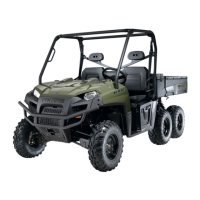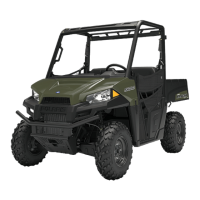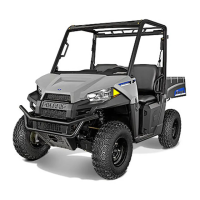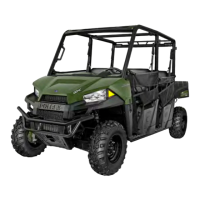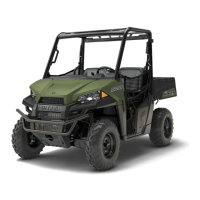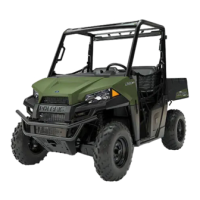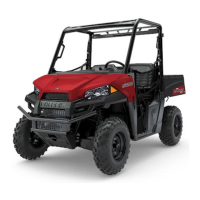FUEL SYSTEM/CARBURETION
4.10
CARBURETOR INSPECTION
1. Inspect the inlet needle tapered surface for any
sign of wear or damage. Be sure the spring
loaded pin is free moving and returns freely when
pushed. The inlet needle and seat should be
pressure tested after assembly.
Good Condition
Worn, Deposits
Wear areas
Seat
Needle
CARBURETOR ASSEMBLY
Pilot Screw
1. Install the pilot mixture screw , spring, washer, and
O-ring as an assembly. Lubricate the O-Ring with
oil or light grease before installation. CAUTION:
Do not damage the O-ring during installation.
Turn t he screw in until it lightly contacts the seat.
Back out the specified number of turns. NOTE:
The final pilot (idle) mixture must be adjusted with
the engine running. Refer to Page 2.15.
Pilot Mixture Screw Base Setting
(Set at Factory)
Refer to Specifications in Chapter 1
FLOAT HEIGHT
ADJUSTMENT
1. Place the carburetor on a level surface as shown
at right to remove weight from float arm. In this
position, the float tongue will rest lightly on the
inlet needle valve pin without compressing the
spring.
Float Height:
Std: BST 34 13--14 mm (.51--.55 inches)
2. Measure the height from the float bowl mating
surface to the top of step in float as shown. Both
sides of float should be parallel to each other. The
measurement should be made at the mid-point on
the top of the float using Float Adjustment Tool
(PN 2872314) or a vernier caliper. When
measuring the height be sure the inlet needle
valve spring is not compressed.
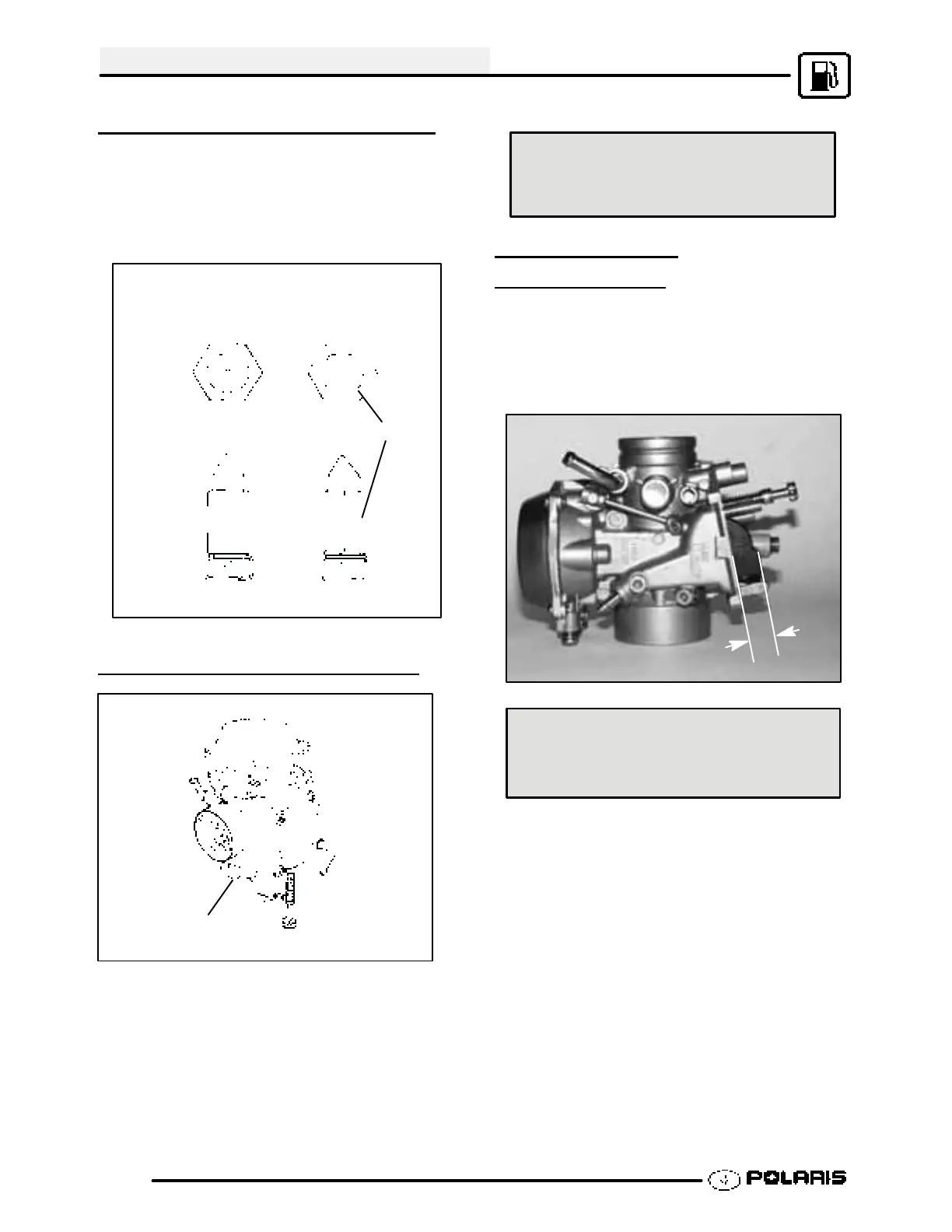